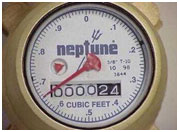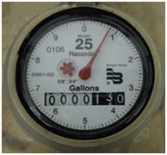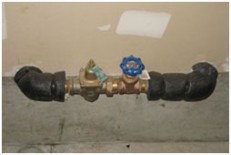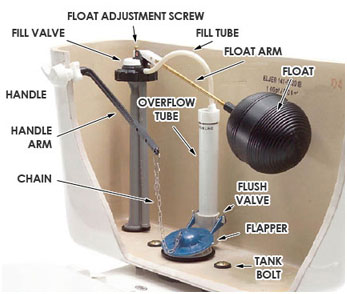Author Archives: Melissa Guy
Furnace / Heat Pump / Boiler
These are the most costly systems to replace, so naturally you want to get as many years of use out of this equipment as you possibly can. The best way to do this is to make sure you have your system professionally serviced at least once a year. Many heating and cooling contractors offer service agreements that assure routine inspection and cleaning at a minimum. Prices usually are a real bargain considering that a new home heating, ventilating and cooling (HVAC) system will cost many thousands of dollars.
Many repairs can be made on HVAC systems to keep them running for decades. Yet, when a boiler section cracks, there is little that can be done except replace the entire unit. Likewise, central air conditioners and heat pumps have two major components: the indoor evaporator coil and the outdoor condensing unit (compressor), that cannot readily be fixed when they fail.
When one needs to be replaced, it is best to replace the other with a compatible unit. Unmatched evaporator coils and condensers usually will operate together for a time, but with a steep penalty in performance, energy usage and premature system failure. So, although it entails higher initial cost, replacing both components at once is the smart thing to do in the long run.
Unfortunately, studies have shown that about half the time, people opt for the cheaper but shortsighted single unit replacement.
While HVAC systems ought to last for decades, it’s not necessarily a bargain to keep them running that long. Tremendous strides have been made in energy efficiency in recent years, leading to quick cost paybacks from lower energy bills.
“If your furnace is over 15 years of age, it’s probably time to boot it out the door… If your furnace’s efficiency comes in somewhere in between 50-75%, you ought to begin investigating rebate offers for buying a high-efficiency new furnace.”
Leaking Pipes
In extreme cases, these can cause expensive damage to floors and belongings. To stop a small leak from turning into a big one, look at your pipes periodically to check for rust or white lime deposits that may indicate a leak is starting.
Guide to Flood Proofing Your Basement
Often basement flooding is caused by two sewer systems being interconnected. Some houses have downspouts, footing drain, and/or the sump pump connected to the sanitary sewer service. During a heavy rain, storm water enters the sanitary sewers, causing backups into one house and overloading the main lines, contributing to backups in other houses.
Sewer backups can also be caused by events not related to storms or flooding. Individual service lines can be plugged by grease, waste, tree roots, breaks in the pipe, or saturated ground. Proper maintenance, like pouring tree root killer down the toilet each year, can prevent most of these problems. The sewer mains can also become plugged by the same causes as well as vandalism or illegal placement of items in manholes. These problems can be fixed by the owner or the City, depending on where the stoppage occurs.
This guide focuses on protection measures that deal with sanitary sewer backup that occurs when the sewer main is overloaded and backs up through the sanitary service line into the house.
There are four ways to stop sewer backup: floor drain plug, floor drain standpipe, overhead sewer, and backup valve. Each of these measures work for buildings with basements or below-grade floors.
Floor Drain Plug
The simplest way to stop sewer backup is to plug the opening where it first occurs. This is at the floor drain, the sanitary sewer system’s lowest opening in the house. Commercial plugs are available and can be placed in the floor drain below the grate. Bolts on metal end pieces are tightened causing a rubber gasket to expand and seal the plug in the pipe.
A plug stops water from flowing in either direction. Therefore, if the laundry tub overflows or other spillage occurs, it will stay in the basement unless the plug is removed. Because of this, it may be best to leave the plug out under normal circumstances and put it in place only during heavy rains.
The advantage of the plug is its low cost and ease of installation. A standard floor drain plug can be purchased at most hardware stores for $5-$10.
One variation is a plug with a float. It allows water to drain out of the basement. When the sewer backs up, the float rises and plugs the drain. A float plug permanently installed will not interfere with the drain’s normal operation.
Precautions
A plug left in the flood drain may contribute to a wet basement if spillage cannot drain out. Float plugs are known to have been jammed open by a small amount of debris.
A floor drain does not stop backup from coming out of the next lower opening, like a laundry tub or basement toilet. Sealing the base of the toilet to the floor will protect you until the water backs up higher than the top of the bowl.
A plug does not tell you if there is a problem in your sewer line. If the plug is not tight enough, pressure can eject it. In older houses, the sewer lines under the basement floor may be clay tile. A buildup of pressure can break them. In new houses, they are Cast Iron or ABS plastic under the floor and less likely to break.
Water Bills Too High?
Nobody likes wasting money. And if your water bill is unusually high, that just may be exactly what’s happening. Water literally going down the drain. In most instances, this means that there is a leak somewhere.
To determine if there really is a leak, you need start by looking at your water meter. Your water meter is what determines your water bill and is read on a regular basis by your water purveyor. In most cases, you will find your water meter located at or near the curb in front of your house.
In most cases, the dial on your water meter will look similar to the two pictures below. Notice that the one on the left has a red triangle next to the needle while the one on the right has a red star. They both do exactly the same thing. They measure water movement. The needle measures the amount of water used. But the triangle and star are far more sensitive and will pick up any water movement.
 |
 |
This means that if the water is not in use anywhere on your property and the triangle or star is rotating clockwise, there is a leak somewhere. This is exactly what a professional plumber will do to verify a leak and narrow down its location.
 |
 |
So we’ve determined that there is a leak. To find out where it is, the next step is to turn off the home’s main water shut off valve at the house.
If after turning the main shut off valve to the house the water meter continues moving, then we know the leak is somewhere between the water meter and the main shut off valve. In most cases this means that your water service – the underground pipe bringing water to the house, is leaking and in most cases, will need to be replaced.
If the water meter stops moving after turning off the main shut off valve at the house, then we know there is a leak in the house somewhere. And in most cases, you will find one or more of your toilets running. To verify this, simply turn off the water going to the toilet.
If the water meter stops turning now, we know that your toilet is running. This often can be remedied with a new toilet flapper.
 |
 |
A Tour of your Toilet: How it Works
Sometimes, your plumbing appliances are a total mystery. How do they work? What parts are there and why are they needed? At Petersen Plumbing, we want to take the mystery out of your plumbing and shine a little light on how they work, so that you can be prepared and educated about what you need.
So here we present:
A tour of your toilet: In the plumbing world we call a toilet a water closet
- Handle, Tank, Rim – the outside parts of your toilet. These are self-explanatory.
- Fill Valve – the device that fills your toilet tank after every flush. If you have a constantly running toilet, a broken or faulty fill valve is a likely culprit.
- Filler Float – A ball-shaped device that plays a role in open and closing the fill valve.
- Overflow Tube – directs tank water into the bowl after it reaches a certain level.
- Flush Valve (or Flapper) – The rubber ball or bulb that lays flush against the discharge hole at the bottom of the tank that allows water to flow quickly into the bowl.
- Bowl – Fairly self-explanatory. You can guess what it’s for, right?
- Siphon – The pipe at the bottom of the bowl that, when the flush valve is activated, pulls waste away from the bowl.
Here is how your toilet flushes.
“When the Flush Lever is pushed it pulls up on the Chain, which in turn pulls up the Flush Valve. This exposes the large discharge hole at the bottom of the tank allowing water to rush quickly into the toilet bowl. There are two types of Flush Valves. Older Flush Valves were rubber Balls (see circular insert in figure). Modern Flush Valves are called Flappers. The Ball or Flapper Bulb is filled with air, so it wants to float, but the weight of the water on top of it clamps/seals it tightly against discharge hole. But, once it is pulled away from the hole, water flows under it and it floats. This holds it open, away from the discharge hole.
Immediately after a flush begins the water level in the tank starts to go down, so the Float starts to go down. [It’s called a Float because it’s a hollow ball floating on the surface of the water.] The Float, by way of the rod attached to it, opens the Fill Valve, and water from the house water pipe (through the Stop Valve) begins to flow into the tank. So, water’s coming in and going out at the same time. But, it’s going out much faster than it’s coming in, so the tank empties into the bowl quickly. When it’s almost empty the Flapper can no longer float and falls onto the discharge hole sealing/closing it again. Now that the discharge hole is closed the water coming in through the Fill Valve starts refilling the tank. While the tank is refilling a small amount of water is also going from the Fill Valve through the Refill Tube into the Overflow Tube. The Overflow Tube empties directly into the toilet bowl. This water raises the water level in (refills) the bowl. If it weren’t for the Refill Tube there would be only a small amount of water in the bottom of the bowl.”
One Big Thing You Will Want To Know:
Where your toilet’s water shut off is. An overflowing toilet is gross, no matter what. Knowing where your toilet shut off is can save you a really disgusting cleanup after the fact. Toilet water shut offs are normally located behind the tank, a few inches or so off the ground. Remember: CLOCKWISE (closes the shut off) COUNTER CLOCKWISE (opens it.)










